In 1963 Rolex launched a new-generation chronograph, the Cosmograph, later named Daytona to mark the brand’s link, as Official Timepiece, with the Daytona International Speedway in Florida.
The new Cosmograph dedicated to racing drivers clearly deserved its place among the Professional watches, a category created by Rolex 10 years previously, in 1953, with models such as the Explorer dedicated to explorers and mountaineers, or the Submariner specially designed for deep-sea diving.

The singular name invented by Rolex immediately marked it out as a very different new model with an equally innovative style. The chronograph counters stood out clearly on the dial thanks to their strongly contrasting color: black on a light colored dial or light colored on a black dial. The tachymetric scale – a graduation allowing the measurement of average speeds over a given distance using the chronograph seconds hand – was moved from the dial to the circumference of the bezel, opening up and simplifying the dial. Dictated by functional considerations these features made the chronograph functions far more legible – one of the challenges of the time. They also gave the Cosmograph a technical and sporty look making it instantly recognizable.
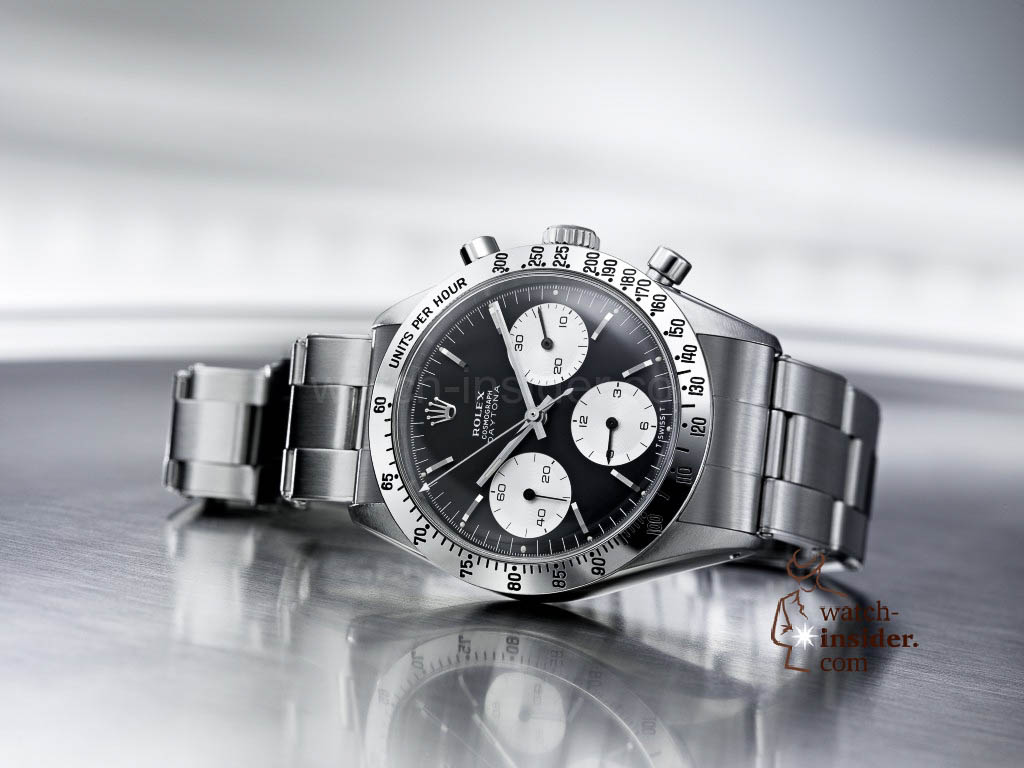
The Cosmograph was part of a long Rolex tradition in chronographs. The brand launched its first models with counters in 1933, which were often equipped with other functions on the dial such as a tachymetric scale for measuring speed, a telemetric scale to track distance, or a pulsometer to measure heart rate. The first chronograph equipped with a waterproof Oyster case appeared in 1939. From its launch, the Cosmograph featured the Oyster case invented by Rolex in 1926 – robust and waterproof thanks to the screw-down case back and winding crown – as well as a solid metal bracelet. The watch also featured a manually wound mechanical movement reputed for its reliability and precision. No brand had yet been able to overcome the technical hurdle of producing a self-winding chronograph.
New dials were introduced, expanding the range in the early years. One special version would become famous as the so-called Paul Newman dial, since the renowned American film star – who was also a racing driver and an icon of masculine style – regularly wore a Daytona with that particular dial. The design of his favorite dial increased legibility of the chronograph functions under difficult race conditions. It was characterized by the seconds track around the dial on a band of the same contrasting color as the three counters. The graduations, in certain cases, were inscribed in red. The counters themselves were differentiated by squares on the markers to facilitate reading.
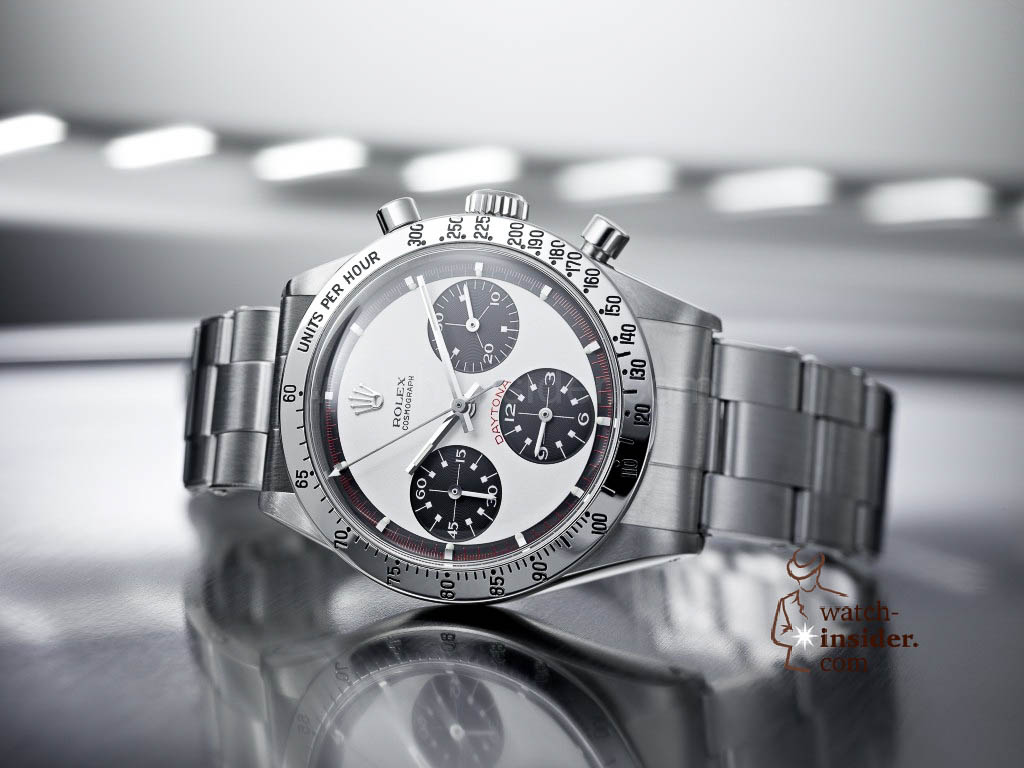
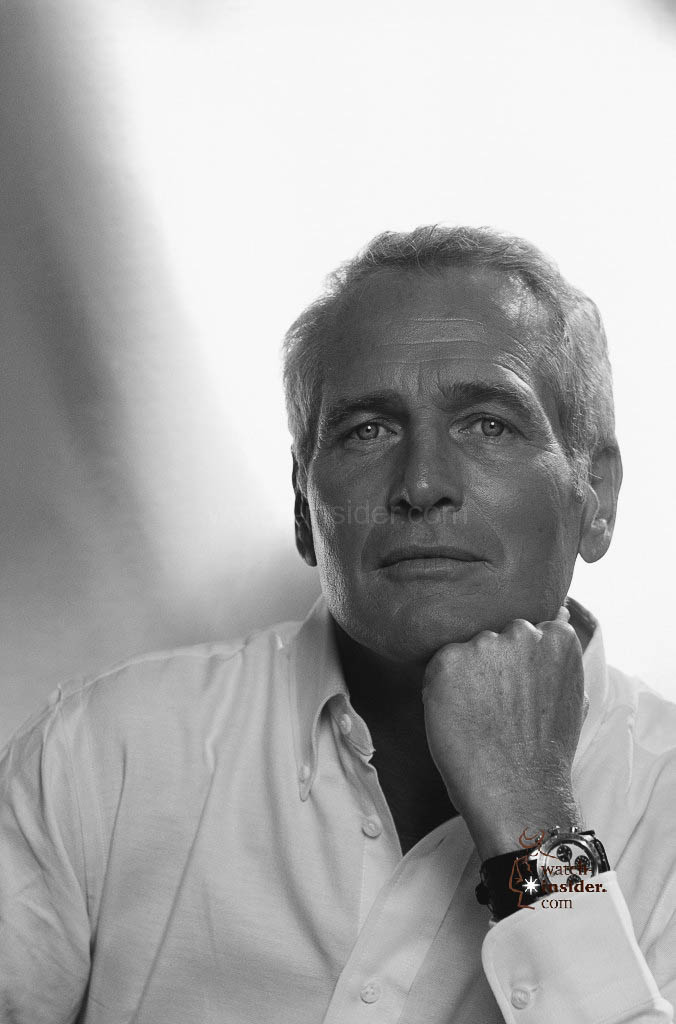
The Cosmograph evolved in 1965 with the launch of a version that introduced screw-down chronograph pushers instead of the pump pushers found on the original model. The screw-down pushers brought the finishing touch to the Oyster concept, and prevented the pushers from being manipulated accidentally. In testimony to its reinforced waterproofness, the name Oyster was inscribed on all the dials in addition to Cosmograph. Another new feature came in the form of a black Plexiglas insert for the tachymetric bezel. The white graduation increased legibility yet again.
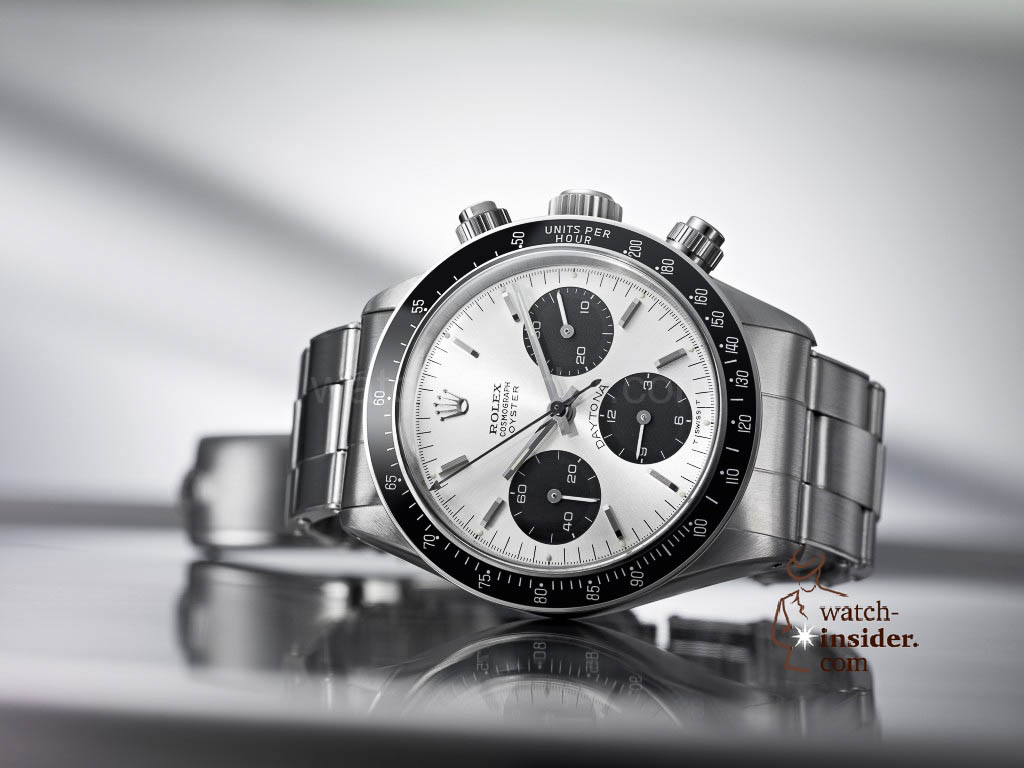
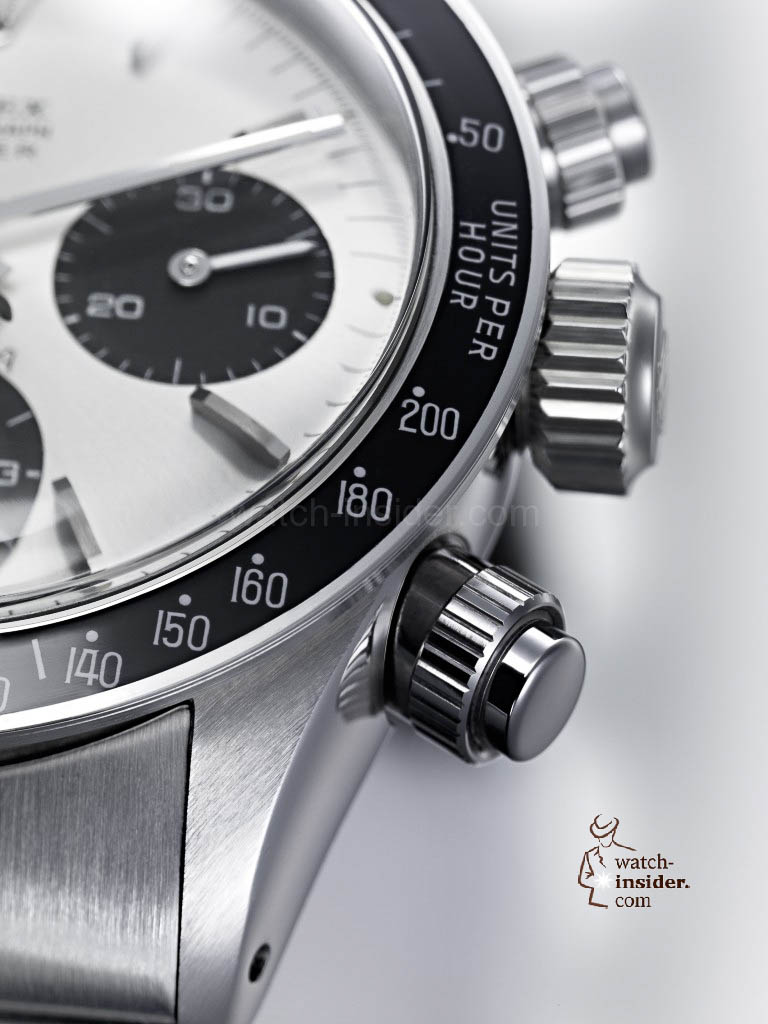
An additional inscription appeared on some dials during the new Rolex chronograph’s early years on the market: Daytona. Initially limited to watches for the American market, it was most probably added at the request of the Rolex affiliate in the united States to mark the brand’s link, as Official Timepiece, with the Daytona International Speedway in Florida, and to symbolize the model’s close connection with the world of motor racing.
The name gradually began to be inscribed on every Cosmograph dial, finally taking on its current form in an arc with red lettering above the counter at six o’clock. Rolex’s chronograph, the Oyster Cosmograph Daytona, also became available in an 18 carat yellow gold version, certified as a chronometer. And these gold versions bore the famous phrase Superlative Chronometer Officially Certified on their dial, a rare achievement for a chronograph.
In 1988, the Daytona became self-winding. The brand opted for a quality, commercially available chronograph movement (the Zenith El Primero), which it then significantly modified to meet its own requirements, replacing more than 50 per cent of the components with parts specifically designed for Rolex Daytona movements. The model’s update went far beyond technical features. The redesigned aesthetics formed the basis of the Cosmograph Daytona’s imposing and elegant appearance today. The diameter of its Oyster case was increased from 36 to 40 mm and included shoulders to protect the crown. The tachymetric bezel in metal was made wider and engraved with a 400-unit graduated scale. New hands, new hour markers, new counters within banded circles: the dial was modernized, while preserving its inimitable style and its signature Daytona in red letters.
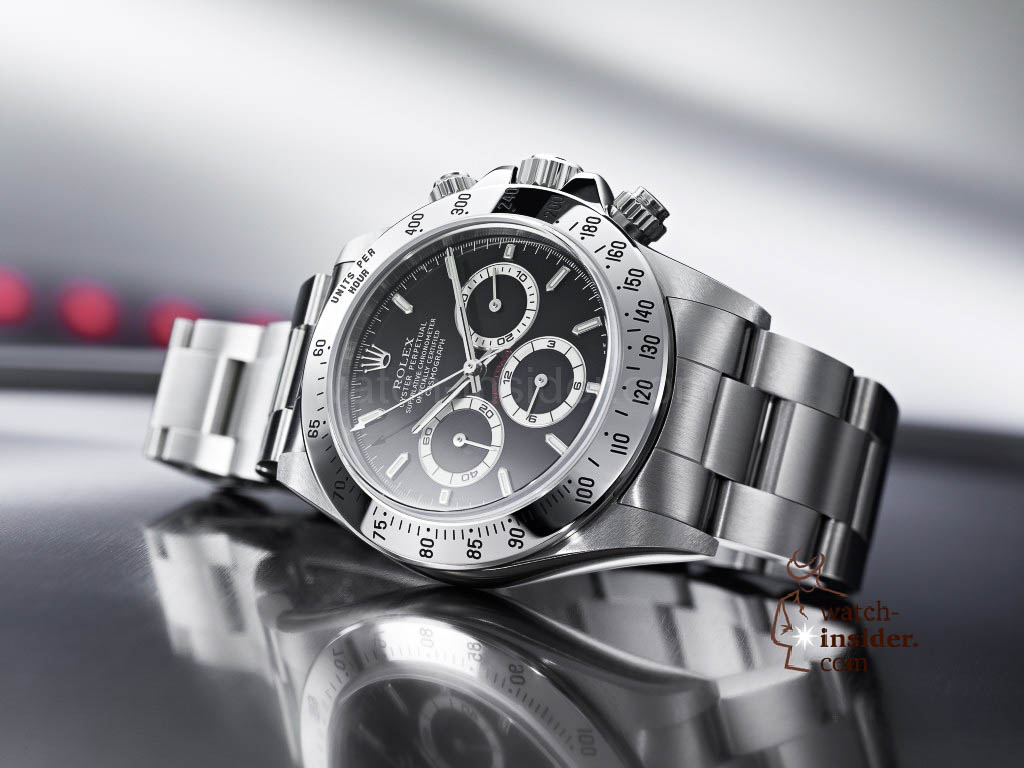
As a backdrop to the launch of an entirely new interpretation of the Cosmograph Daytona, it is difficult to imagine a more symbolic event than that of entering a new millennium. Introduced by Rolex in the year 2000, this new model – like the first Cosmograph in its time – embodied the chronograph of the future. Its aesthetics remained deliberately faithful to the codes of the 1988 Cosmograph Daytona, perfecting the iconic and distinctive design of the original, and its subtly sculpted strong lines and balanced ergonomics. In 1963 the Rolex chronograph had innovated with radically new aesthetics that enhanced the legibility of its functions. However, the innovations in the Oyster Perpetual Cosmograph Daytona for the new millennium essentially lie inside the case.
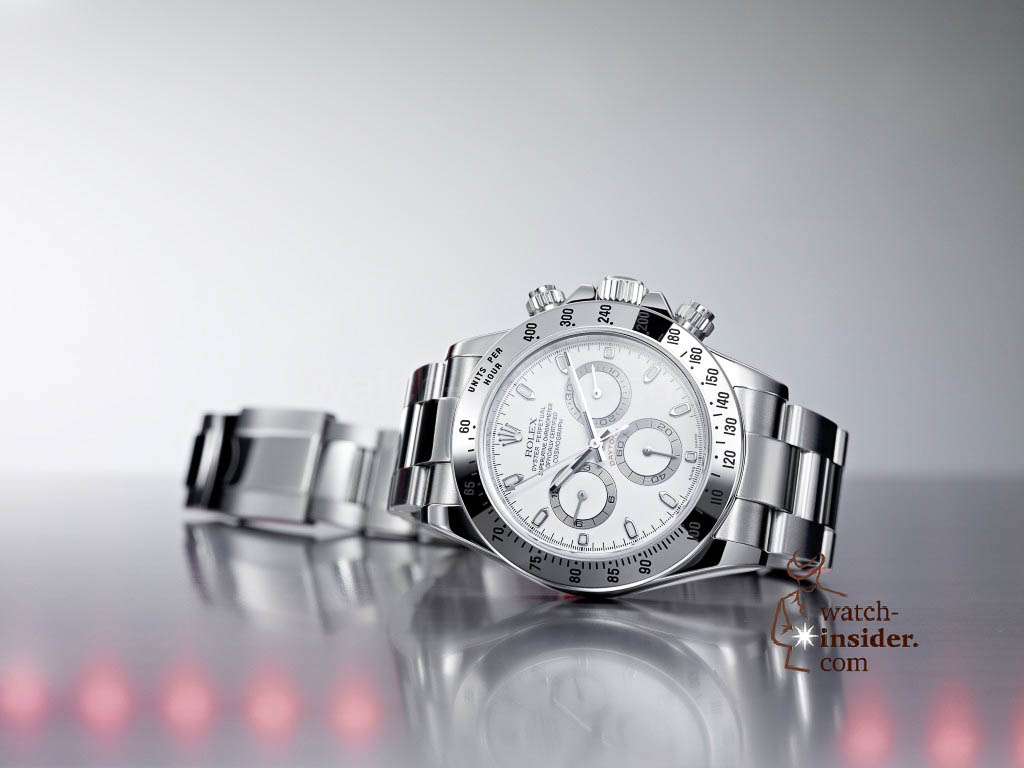
This model has a new-generation self-winding chronograph movement – calibre 4130 – specially designed for the Cosmograph Daytona and entirely manufactured in-house. A masterpiece of engineering and micromechanics, replete with innovative and patented technical solutions, this high-performance movement has set a new standard for luxury self-winding chronographs in terms of robustness, reliability, efficiency and precision, as well as for ease of maintenance. Caliber 4130’s performance stems particularly from the use of a vertical clutch to activate the chronograph function, instead of the traditional lateral clutch. This new solution functions on the principle of two discs one above the other which work together by direct friction contact and offers significant advantages – extremely precise starting and stopping of the perfectly smooth running chronograph seconds hand as soon as the pusher is pressed; and the ability of the chronograph to function for long periods of time with no negative impact on the precision of the watch.
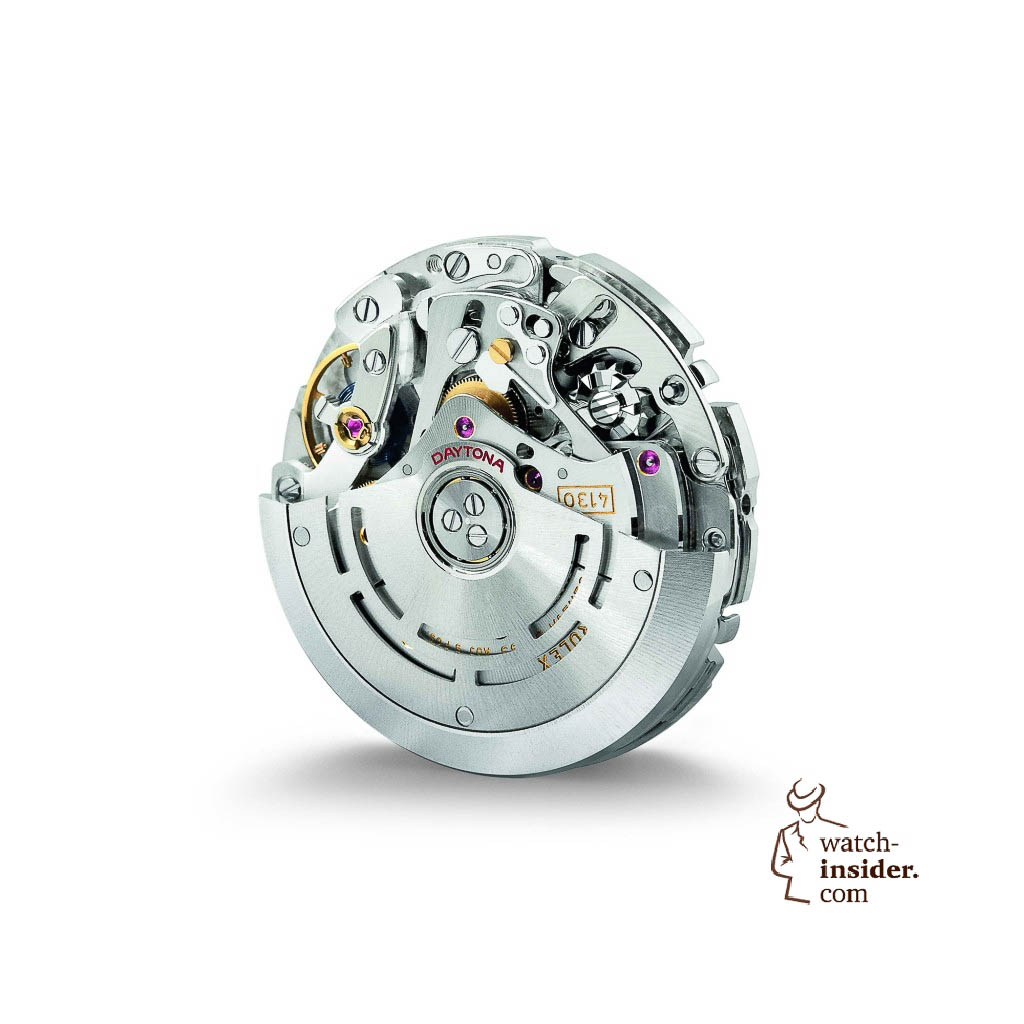
With Rolex caliber 4130 engineers managed to reduce the number of components for the chronograph mechanism by 60 per cent. They particularly simplified the minute and hour counter systems – traditionally two distinct mechanisms situated on each side of the movement – by integrating them into a single module judiciously placed on one side of the movement with an off-center clutch. A patented solution that reduces from five to one the number of adjustments by excentric screws required regulating the chronograph. It also saves space, making it possible to house a larger mainspring and thereby extend the power reserve to 72 hours, instead of the previous 50. The mainspring, the powerhouse of the watch, can be replaced without the whole movement having to be disassembled, thanks to the independent self-winding module that is easily removed to access the barrel. Additionally, the efficiency of the self-winding mechanism has been substantially enhanced, notably with a system of new-generation reversing wheels that allow more efficient bidirectional winding.
The oscillator, the strategic heart of the watch and guarantor of its precision, also took advantage of telling innovations. A larger balance wheel, equipped with the Rolex micrometric regulating system via Microstella nuts, contributes to the movement’s precision. In keeping with the architecture of Rolex calibers, it is held in place by a traversing balance bridge, fixed at both sides to improve resistance to shocks and vibrations. But one of the most spectacular developments introduced on the oscillator of the new Cosmograph Daytona is the Parachrom hairspring. Developed, patented and entirely manufactured by Rolex in an alloy of niobium and zirconium, the Parachrom hairspring has exceptional qualities that greatly increase the precision of the movement by significantly enhancing its resistance to disturbances. It is also insensitive to magnetic fields, extremely stable when exposed to temperature variations and is unaffected by the thousands of small shocks a watch is subjected to in daily wear, while remaining up to 10 times more precise than a traditional hairspring.
Two discreet details on the dial show that the watch was fitted with the new more powerful movement. First, the horizontal positioning of both chronograph counters – the small-seconds was moved from its usual position at 9 o’clock to the bottom of the dial at 6 o’clock. Secondly, the fact that the minute and hour counters are aligned slightly above the center of the dial, an aesthetic signature that enhances the visual balance of the dial and underlines the meticulous attention to detail so typical of Rolex. Contrary to its predecessors, no additional new inscription appears on the dial of the new Cosmograph Daytona.
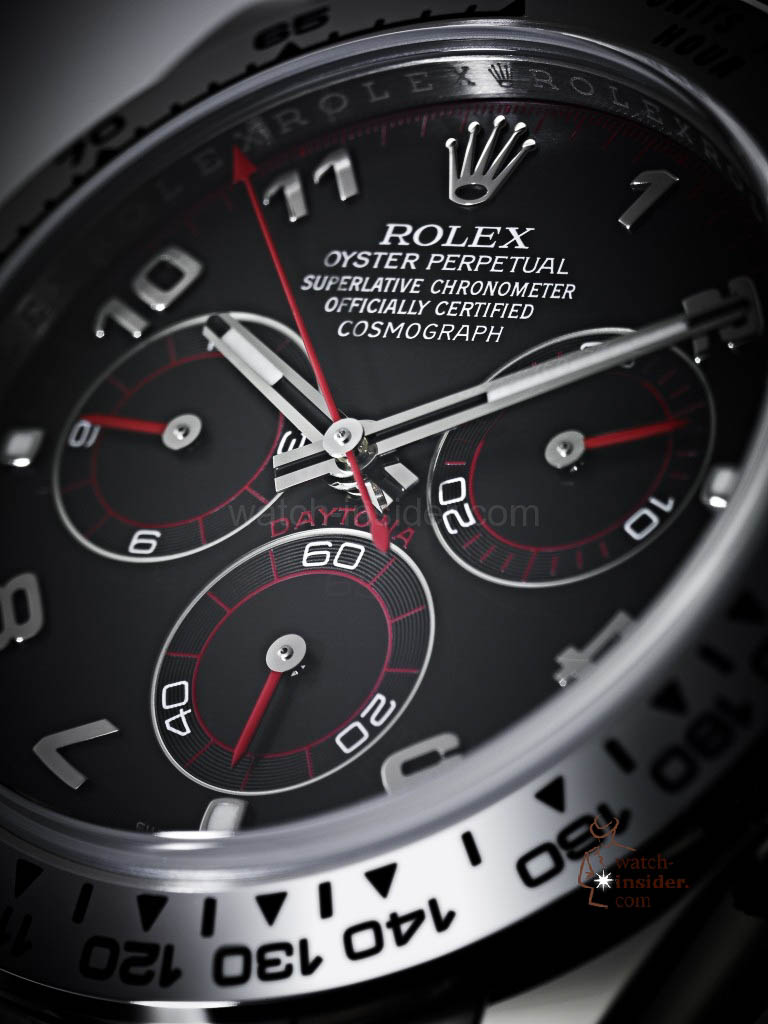
HAPPY BIRTHDAY DAYTONA!
Fifty years after its creation the Rolex Cosmograph Daytona is the first Oyster model in the Professional range to be offered in platinum, the noblest of precious metals, fitted for the occasion with an ice blue dial, exclusive to Rolex platinum models. It is also equipped with a new developed monobloc Cerachrom bezel, an exclusive Rolex innovation with exceptional resistance properties and incomparable aesthetics.
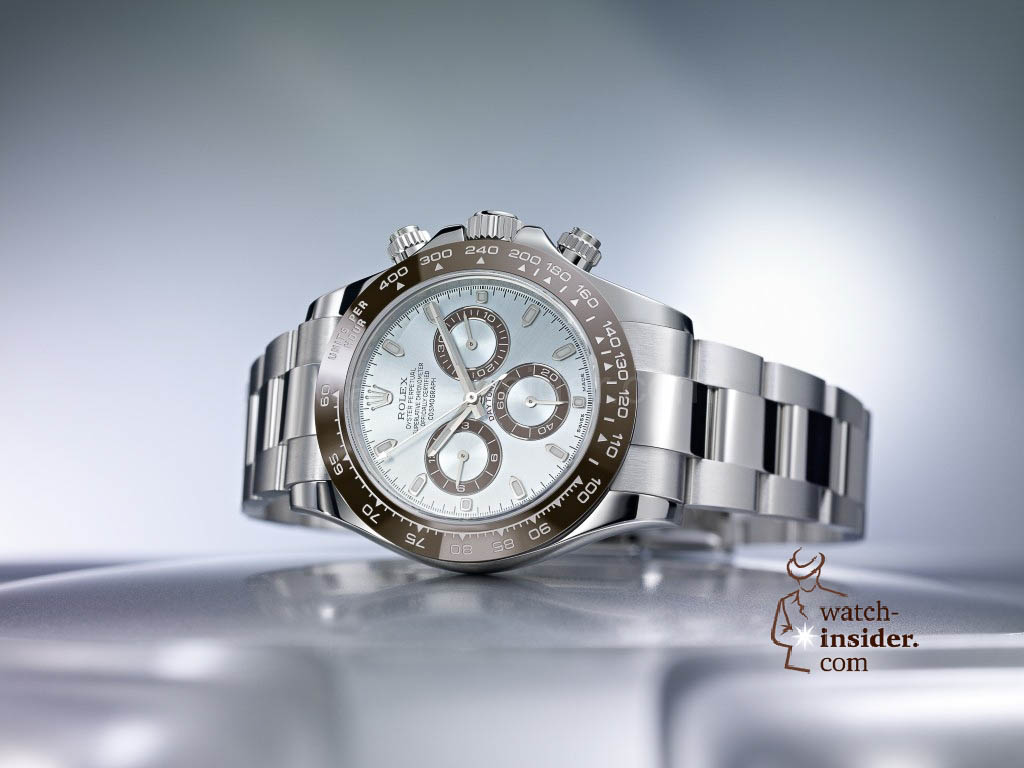
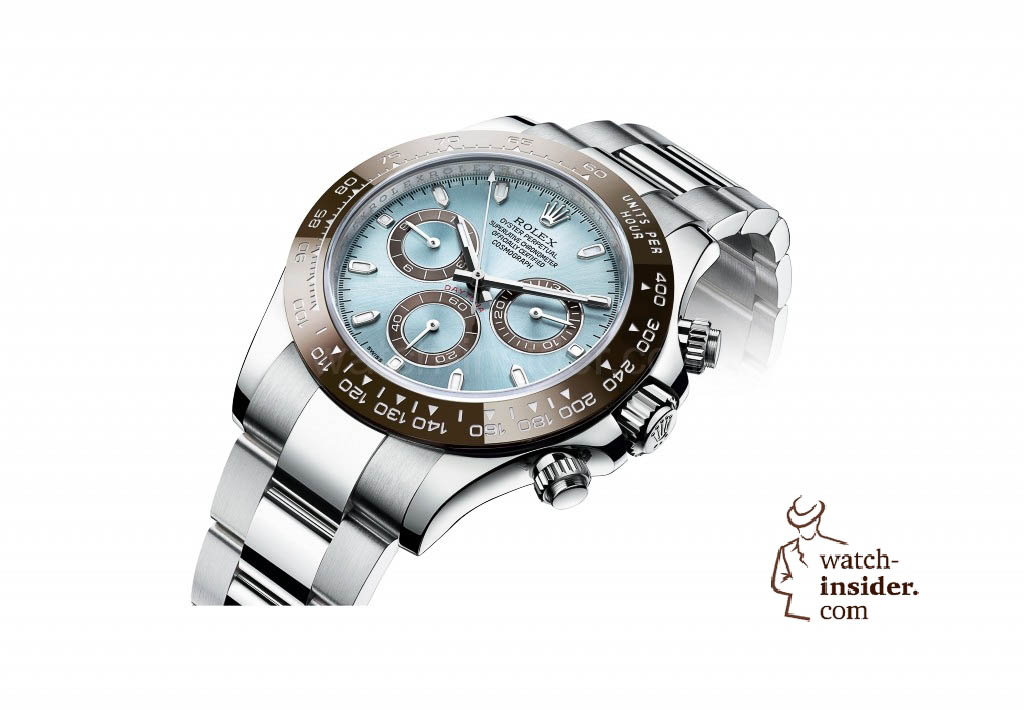

The brand’s approach, nonetheless, has remained unchanged over the last 50 years: to strive to design and manufacture the chronograph, which corresponds to its demands of quality and function and to perpetuate the Daytona’s legend.
I agree … What a cool watch! What a cool story!
But you guys at Rolex please allow me, a watch-aficionado & -blogger, one single question: Why did you not present a redesigned brand new Daytona for its 50th anniversary? The year 2013 would have been a good occasion …

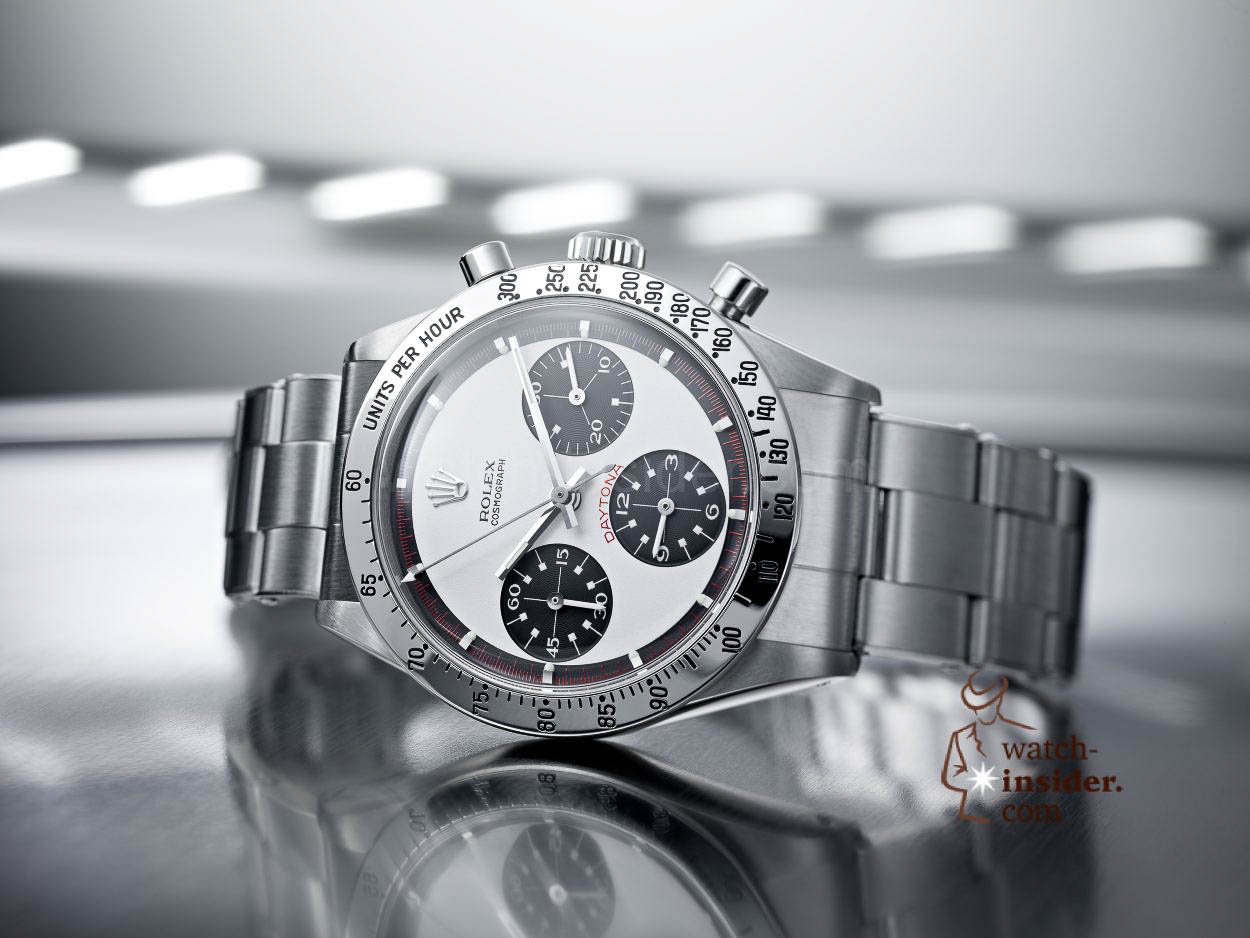
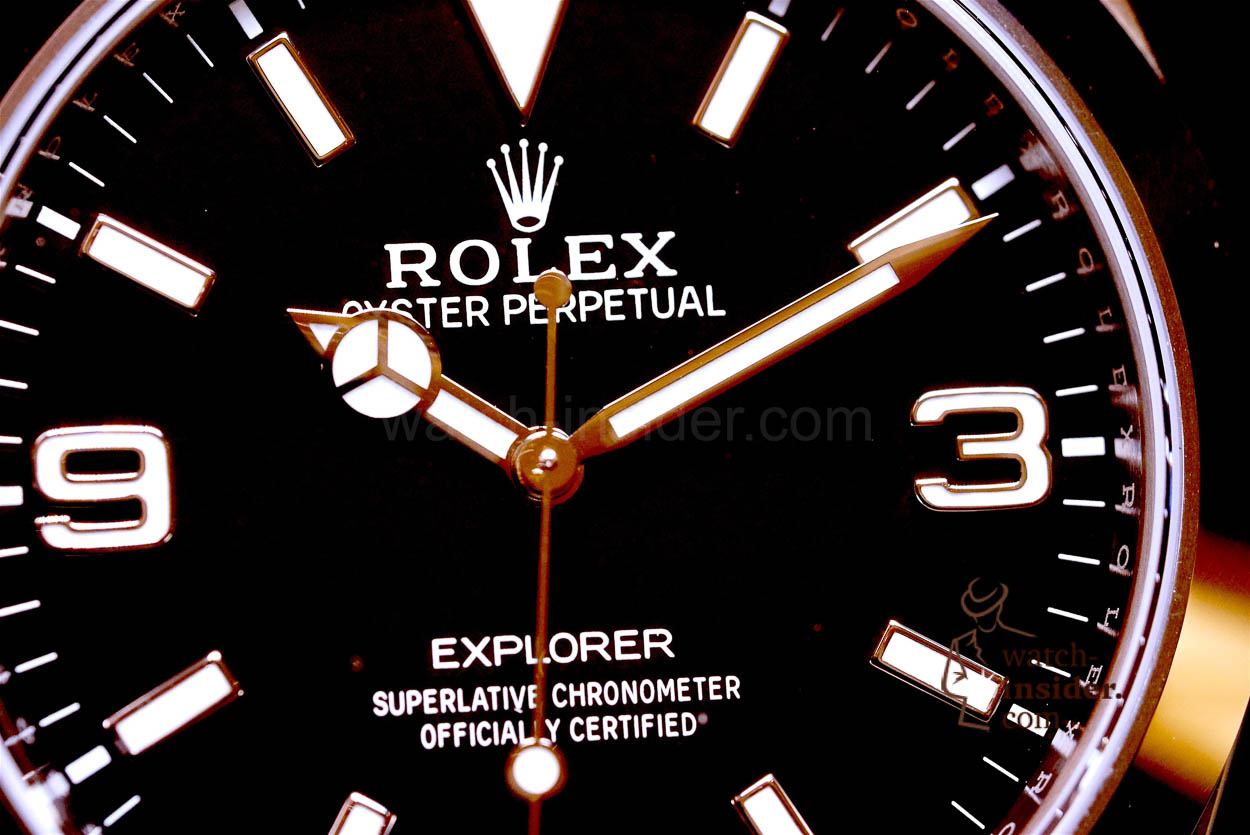
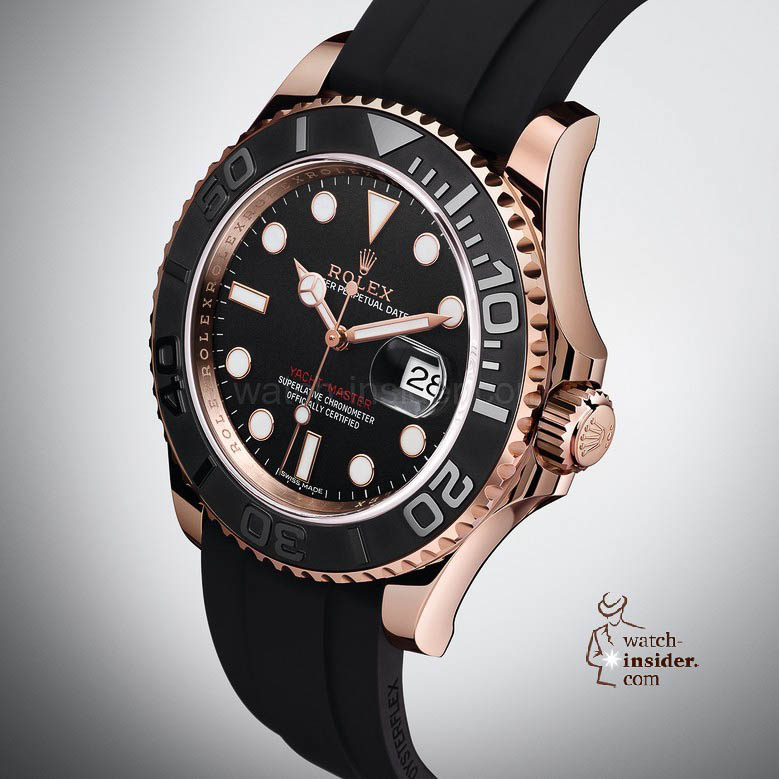
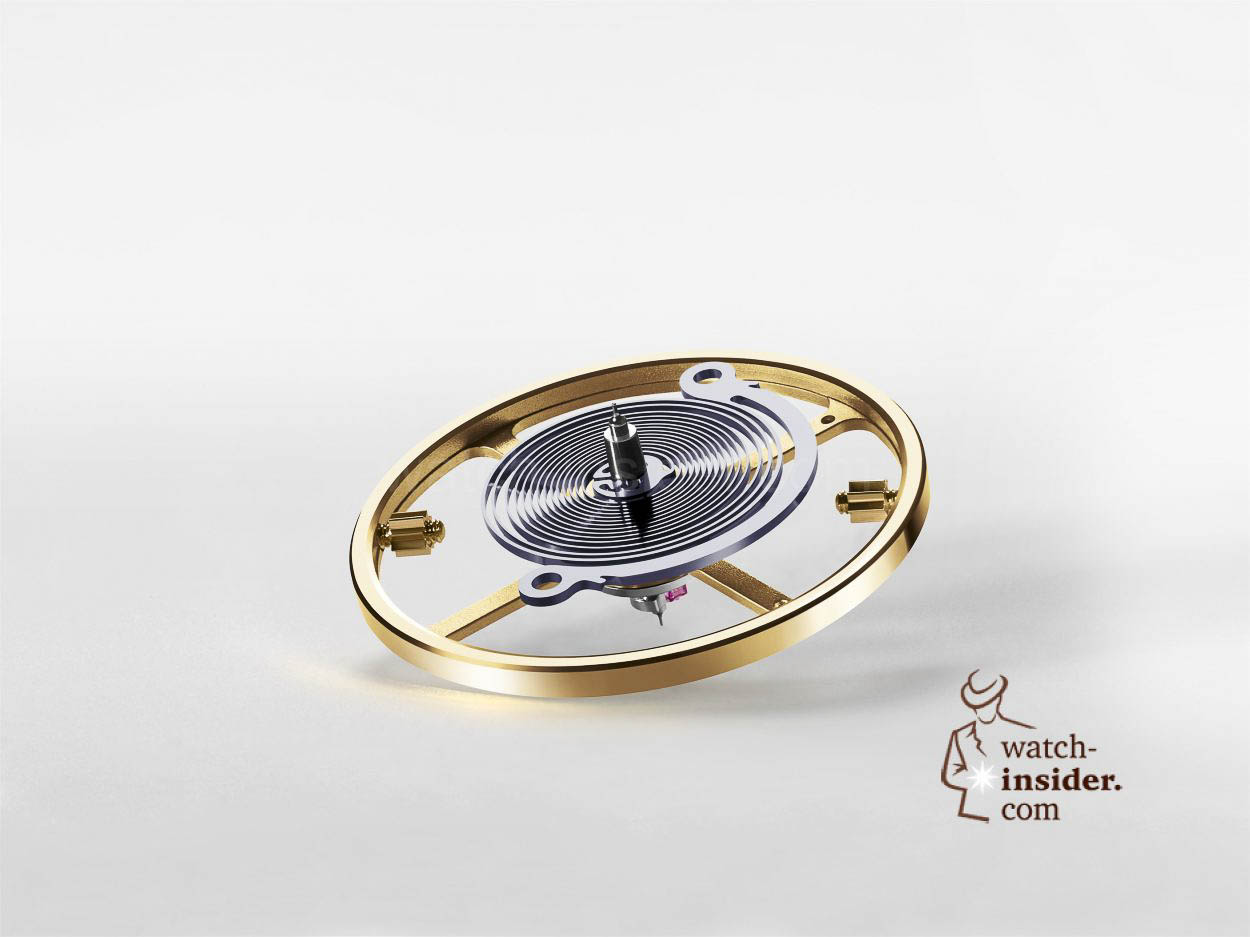

I became a scuba diver In Miami Beach, as a teenager many years ago. My first Rolex Sub cost $250.00 which was a lot In those day’s. Since then I’ve owned several other Rolex’s & now I wear a gold sub, which I use for diving , black tie events,ect. Where ever I go, I receive many compliments. As far I’m concerned, It’s still the best all around high grade time piece for every day use.
Paul Newman must have been a small man, since he could wear Daytona. Why should watches be bigger and bigger all the time? Why not a 60 mm Daytona so you all who want bigger watches can feel yourself man again.
In general the sizes of the watches have steadily increased in the last years. One gets used to this new “look”, so it is more and more difficult to wear “small” watches. It’s not a question to make a Daytona with 60 mm, but it would be appropriate to finally make a more masculine and bigger one. The today’s Daytona has become a wonderful chronograph for women…
To follow on, what worries me is that is that the size fits into a female bracket but the style is gents.It is just that as you know the gents size is usually starting at 42mm.Please send me your comments as I am interested in your valuable opinion.
Hi Alex
In your opinion do you think that Rolex will increase the size of the Daytona case to 42mm and or put a cerechrom bezel on the steel one in 2014.I recently spoke to the Rolex representative in SA and she said that the reason for the same size in 2013 was due to the fact that the movement fitted perfectly into this case and that it would keep it’s icon appeal.
Your comment would be of great interest to me as according to the retailers this is still one of the most demanded pieces in the world and the waiting list is very long.
Regards
SD
I have no answers concerning what might come next year. There should be a new and bigger Daytona, but who could tell today. I doubt your retailer has reliable information, since even the retailers don’t get any updates prior to next Baselworld.
What is definitive a lie is that there are waiting lists for the Daytona. Not any more my friend you can get your desired model by entering a store. But what retailer do is to tell you that you have to wait, so they keep the myth alive.
Don’t let them fool you. The best days of the Daytona are over. Until Rolex will not show a bigger and more masculine one the actual Daytona will stay a nice chronograph for women…
Very nice post. I simply stumbled upon your blog and wanted to mention that I
have really enjoyed browsing your blog posts. After all I’ll be
subscribing for your feed and I’m hoping you write
once more soon!
Thank you for yet another great Blog entry !
Imho the most logical explanation for your interesting question is that Rolex simply continue to do what they always do and what they are simply the best at. Maximising EVERY marketing and sales opportunity to the n’th degree with minimal design/production changes/costs.
Totally new models from Rolex are (deliberately) very few and far between. I would guess the time that they finally introduce an all new Daytona would be when Rolex decide that all lucrative marketing/sales have been fully explored/exhausted and when sales/demand starts to show a consistent decline towards a level deemed unacceptable by Rolex SA.
My rhetorical question to you would be: Where is the logic in cutting short a Product Life Cycle (PLC) if the existing model/s continue to show strong sales/demand? Rolex exert great efforts into developing long PLC’s which are, i imagine, the envy of several rivals. Imho it would seem somewhat of an “own goal” to cut short a PLC simply for reason of neat and tidy chronology.
Rolex are truly masterful at managing their Brand and their iconic models. The downside for some of us enthusiasts is that this can sometimes seem like painfully slow progress. That’s (partly) why Tudor make a great accompaniment to Rolex!
BTW Congrats on your superb Blog Mr Linz. This year you provided the very best (fast, concise, relevant and interesting) coverage of Basel imho. Thank you Sir and keep up the great work ! (Just please don’t overload your blog with too many annoying flashing/scrolling adverts in the future, as some others have done !)
Kindest regards,
Baku
Baku, thank you for the comment and thank you for your positive feedback!
Concerning the general behaviour of Rolex I totally agree with you. But the actual Daytona became a women’s watch meanwhile. It is an it-watch for the upperclass girls/ladies around the world. Depending on the financial power of the man beside the girl/lady she will wear a Daytona in red gold with a leather or gold bracelet.
Only those wearing the Daytona with red gold bracelet are the absolute cool ones, those with the leather bracelet will still have to wait to get access to this ultimate club of coolness…
Many men meanwhile have sold their Daytona and would not buy a new one. The Daytona (even the one in steel) is on stock at the retailers, but they don’t tell the truth just to keep the mythm alive …
Rolex should have presented a new redesigned Daytona for its 50th anniversary!
Cheers,
Alexander
PS: We will not overload this blog with commercials… We are working on more innovative concepts …
Hi,
I agree with my friend that rolex is a big name in watch industry. However, others could challenge. An experience of two years of using Panerai and date just II, i could say Panerai in terms of accuracy. Adds contribute to publicity of Rolex.
If you ask me I shall always say Rolex is the greatest, though there are other watches which I love, but nothing to beat Rolex!